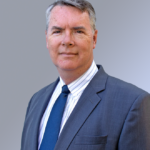This webinar is part of the OLC Innovate 2025 Best-in-Track webinar series!
As online learning grows, educators face the ongoing challenge of fostering interactive, student-centered experiences, particularly for asynchronous learners. This challenge becomes especially significant for what the presenter terms “Accidental Asynchronous Learners”—students who prefer synchronous learning but find themselves forced into asynchronous participation due to scheduling or situational constraints. These students often struggle with high transactional distance, a concept defined by Michael Moore (1997), which refers to the psychological and communication gaps that can arise in distance education. In asynchronous learning, where there is often less interpersonal dialogue and higher course structure, students with low learner autonomy (i.e., those less adept at self-directed learning) can feel isolated and unsupported.
In the face of these challenges, Generative AI (GenAI) tools, particularly those based on GPT models, present a potential solution. These tools offer opportunities for simulating interactive learning experiences, providing Accidental Asynchronous Learners with much-needed dialogue and flexible learning activities. This webinar will explore the use of custom-built GPTs to support students who cannot engage in real-time interactions, showcasing how these tools can foster deeper learning and greater engagement in asynchronous online environments. This session is designed to be dynamic, engaging, and exploratory. By positioning GenAI as a thinking partner rather than a thinking replacement, we can help students develop the skills they need to thrive in an increasingly AI-driven world.
Intended Audience:
Faculty, instructional designers, technologists, design thinkers
Key Takeaways:
- Understand the potential of GPTs to reduce transactional distance and increase engagement for asynchronous learners.
- Gain hands-on experience with several custom GPTs designed to simulate interactions with instructors, peers, and content.
- Explore practical strategies for integrating GenAI tools into their own teaching practices, with a focus on student-centered learning.
- Reflect on the role of AI in future learning environments and consider how these tools can be used to foster critical thinking and autonomy among students.
Please Note: While attending the webinar live is free for OLC members and non-members, on-demand recordings will be available post-webinar for Professional and Institutional Members only. Consider becoming an OLC member for access to these and many other great benefits!
Speaker Bio
 Brian Beatty, Ph.D.
Brian Beatty, Ph.D.
Professor of Instructional Design and Technology – San Francisco State University
Dr. Brian Beatty is Professor of Instructional Design and Technology in the Department of Equity, Leadership Studies and Instructional Technologies at San Francisco State University. Brian’s primary areas of interest and research include social interaction in online learning, flipped classroom implementation, and developing instructional design theory for Hybrid-Flexible learning environments. At SFSU, Dr. Beatty pioneered the development and evaluation of the HyFlex course design model for blended learning environments, implementing a “student-directed-hybrid” approach to better support student learning.
Previously (2012 – 2020), Brian was Associate Vice President for Academic Affairs Operations at San Francisco State University (SFSU), overseeing the Academic Technology unit and coordinating the use of technology in the academic programs across the university. He worked closely with IT professionals and leaders in other units to coordinate overall information technology strategic management at SFSU. Prior to 2012, Brian was Associate Professor and Chair of the Instructional Technologies department in the Graduate College of Education at SFSU. He received his Ph.D. in Instructional Systems Technology from Indiana University Bloomington in 2002. Dr. Beatty also holds several CA single-subject teaching credentials, an M.A. in Instructional Technologies from SF State and a B.S. in Electrical Engineering from Marquette University. Dr. Beatty has more than 35 years of experience as a classroom teacher, trainer, and instructional designer at schools, businesses, and the US Navy.
